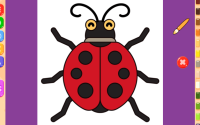Coloring Pictures of Animal Tracks A Fun and Educational Activity
Educational Value of Animal Track Coloring Activities
Coloring pictures of animal tracks – Coloring animal tracks isn’t just a fun pastime; it’s a surprisingly effective educational tool that can engage children while boosting their learning in several key areas. These activities offer a unique blend of creativity and learning, making them a valuable addition to any educational program or homeschooling curriculum.Animal track coloring pages provide a hands-on, engaging way to introduce children to the fascinating world of wildlife.
By coloring different tracks, children learn to visually identify various animals, fostering a deeper appreciation for biodiversity and the natural world. The act of coloring itself encourages observation and detail, enhancing their understanding of the subtle differences between animal tracks.
Fine Motor Skill Development and Hand-Eye Coordination
Coloring animal tracks directly improves fine motor skills and hand-eye coordination. The precise movements required to stay within the lines, apply color evenly, and control the pressure on the coloring tool strengthen small muscles in the hands and fingers. This is crucial for developing dexterity and preparing children for tasks like writing and drawing. Repeated practice with coloring pages enhances their control and precision, leading to improved hand-eye coordination.
My dear ones, tracing the paw prints, the delicate hoof marks, the slither of a snake – each stroke of your crayon tells a silent story. To deepen your connection with these wild wonders, I invite you to explore the vibrant pages of the blue star animal coloring book , a treasure trove of creatures big and small.
Then, return to your animal track pictures, enriched by this newfound knowledge, and let your imagination soar!
For example, a child might initially struggle to color within the lines of a small paw print, but with practice, they will develop the fine motor control needed for accuracy.
Cognitive Benefits of Track Identification and Categorization
Identifying and categorizing different animal tracks through coloring exercises stimulates cognitive development. Children learn to differentiate between various track shapes and sizes, associating them with specific animals. This process enhances their observational skills, problem-solving abilities, and pattern recognition. For instance, a child might learn to distinguish between the claw marks of a canine and the cloven hooves of an ungulate.
The act of sorting and grouping similar tracks strengthens their understanding of classification and helps them develop critical thinking skills.
Lesson Plan: Animal Habitats and Behaviors
This lesson plan utilizes animal track coloring pages to teach children about animal habitats and behaviors.First, introduce a variety of animal track coloring pages featuring common animals from a specific habitat (e.g., a forest or grassland). Encourage children to color the tracks carefully, paying attention to detail. Then, have them research the animals whose tracks they colored, focusing on their habitats and behaviors.
This research could involve using books, websites, or even observing animals in a local zoo or nature center. Finally, have children create a visual display or presentation showcasing their colored tracks alongside information about the animal’s habitat and behavior. This could be a simple poster, a slide show, or even a short presentation to the class. For example, children could learn that a deer’s hoof prints indicate a preference for grasslands and forests, while a bear’s large paw prints suggest a broader range of habitats.
This multi-faceted approach connects the coloring activity directly to broader learning objectives, creating a comprehensive and engaging educational experience.
Artistic Aspects of Animal Track Coloring Pages: Coloring Pictures Of Animal Tracks

Designing engaging animal track coloring pages goes beyond simply outlining tracks; it involves thoughtful consideration of artistic style, color palettes, and texture to create visually appealing and educational materials. The artistic choices significantly impact a child’s engagement and the overall learning experience.
Different artistic approaches can dramatically alter the feel and appeal of an animal track coloring page. A well-chosen style can make the activity more accessible and enjoyable for children of various ages and artistic abilities.
Artistic Styles in Animal Track Coloring Pages
Several artistic styles can be effectively used to depict animal tracks. Realistic illustrations provide accurate representations of the tracks, emphasizing details like claw marks and pad impressions. Cartoonish styles, on the other hand, offer a playful and simplified representation, ideal for younger children. Abstract styles can be used to explore the shapes and patterns of tracks in a more creative and less literal way.
For example, a realistic style might meticulously render a wolf track, showing individual claw marks and the precise shape of the pads. A cartoonish style might simplify the track into a playful, slightly exaggerated shape, perhaps with large, friendly eyes added. An abstract approach could represent the track as a series of overlapping circles and lines, focusing on the overall form and rhythm rather than precise anatomical detail.
Color Palettes for Animal Track Coloring Pages
The use of color is crucial in enhancing the visual appeal and educational value of animal track coloring pages. A carefully chosen color palette can evoke the natural environment of the animal, highlighting specific features of the tracks. For example, using earthy tones like browns, greens, and muted oranges would be appropriate for tracks found in forests or grasslands.
A brighter palette might be used for tracks found in more vibrant environments, such as coral reefs or tropical rainforests. Consider using complementary colors to create visual interest, or analogous colors to create a sense of harmony. Furthermore, the choice of colors can also reinforce the educational aspect, for example, using different shades of brown to represent different soil types where the tracks were found.
Texture and Shading Techniques in Animal Track Coloring Pages, Coloring pictures of animal tracks
Adding texture and shading significantly increases the realism and visual interest of animal track coloring pages. Different shading techniques, such as cross-hatching or stippling, can create the illusion of depth and form, making the tracks appear more three-dimensional. The use of textures, such as rough or smooth surfaces, can mimic the actual texture of the ground where the track was made.
For example, you might use cross-hatching to create the impression of muddy ground around a track, or stippling to represent a sandy surface. This adds a layer of realism that makes the coloring experience more engaging and immersive.
Key Design Elements for Visually Appealing Animal Track Coloring Pages
Several key design elements contribute to creating visually appealing and engaging animal track coloring pages. Paying attention to these details can significantly enhance the overall aesthetic quality and learning experience.
- Clear and Simple Artikels: Ensure the tracks are clearly defined with simple, easy-to-follow Artikels. This is especially important for younger children.
- Appropriate Level of Detail: Balance detail with simplicity, keeping in mind the target age group. Younger children may benefit from simpler designs, while older children can handle more intricate details.
- Visually Appealing Composition: Arrange the tracks on the page in a visually pleasing way, considering factors like spacing and balance.
- Use of White Space: Don’t overcrowd the page. Leave sufficient white space to avoid a cluttered look.
- Thoughtful Color Palette: Select colors that complement each other and enhance the overall aesthetic appeal.
- Interesting Backgrounds (Optional): A simple, relevant background can add context and visual interest, but avoid overwhelming the tracks themselves.
Creative Applications and Extensions of Animal Track Coloring
Animal track coloring pages offer a fantastic foundation for extending learning beyond simple coloring. They can spark creativity, encourage storytelling, and deepen understanding of the natural world. Let’s explore some exciting ways to use these pages to create engaging and educational activities.
Coloring pages provide a springboard for numerous creative projects. The simple act of coloring can be transformed into a more complex and rewarding experience by building upon the images.
Animal Track Themed Crafts
Once a child has finished coloring their animal track page, they can use it as a template for various crafts. For instance, the colored track could be cut out and glued onto a piece of construction paper to create a simple card. Alternatively, the track could be used as a stencil to create multiple tracks on a larger piece of paper, forming a trail leading to a miniature diorama of the animal’s habitat.
More complex projects could involve creating 3D animal track models using clay or salt dough, molded based on the colored page. The possibilities are as diverse as the animals themselves.
Storytelling and Creative Writing Prompts
Animal track coloring pages serve as excellent visual prompts for storytelling and creative writing. The image of a specific animal track can inspire narratives about the animal’s journey, its daily life, or even a fictional adventure.
Here are some examples of how to use animal track coloring pages to stimulate creative writing:
- Ask children to write a story about the animal that made the track, describing its environment, its habits, and what it might be doing.
- Have them create a fictional story where the tracks lead to a hidden treasure or a secret place.
- Encourage children to write a poem or a song inspired by the animal and its track.
Integrating Animal Track Coloring Pages into Other Learning Activities
Animal track coloring pages can easily be incorporated into other learning activities to enhance engagement and retention.
These activities can be used both indoors and outdoors to provide a holistic learning experience.
- Nature Walks: Before a nature walk, children can color pages depicting the tracks of animals they might encounter. This prepares them for what they might see and increases their attentiveness during the walk. After the walk, they can compare their colored tracks to actual tracks they observed.
- Scavenger Hunts: Create a scavenger hunt where children must find objects related to the animals whose tracks they colored. This could involve finding leaves from the animal’s preferred food source or other items associated with its habitat.
Illustrative Example: A Nature-Themed Diorama
Imagine a child, perhaps seven years old, meticulously coloring a page featuring a bear’s paw print. The page is vibrant; the brown fur is shaded with varying tones, and the claws are sharply defined. After coloring, the child cuts out the paw print and uses it as a guide to sculpt a miniature bear paw from air-dry clay. This clay paw is then carefully placed in a shoebox diorama.
The shoebox is transformed into a miniature forest scene. Small twigs and leaves, collected on a recent nature walk, form the base. The child adds a tiny plastic bear figure, strategically positioning it near the clay paw print, creating a believable narrative. Finally, a backdrop of blue construction paper represents the sky, completing this engaging, hands-on project that perfectly blends art and nature.
Accessibility and Inclusivity in Animal Track Coloring Pages

Creating animal track coloring pages that are enjoyable and accessible for all children is crucial. Inclusive design considers the diverse needs and abilities of children, ensuring that everyone can participate and benefit from the activity. This includes children with visual impairments, motor skill challenges, and diverse cultural backgrounds. By prioritizing accessibility, we can foster a more equitable and enriching learning experience for all.
Designing inclusive coloring pages involves thoughtful consideration of various design elements to accommodate diverse needs. Simple, clear designs with bold Artikels and minimal detail are easier for children with visual impairments or fine motor skill challenges to manage. Larger print for titles and any accompanying text ensures readability. The choice of color palette should also be considered; high contrast between the lines and the background can significantly improve visibility.
Using thicker lines and larger spaces between elements allows for easier coloring and reduces frustration.
Design Elements for Inclusive Animal Track Coloring Pages
Several design elements can significantly enhance the accessibility and inclusivity of animal track coloring pages. These elements work together to create a more welcoming and engaging experience for all children.
- Large Print and Clear Font: Use a clear, sans-serif font like Arial or Calibri in a size of at least 14 points for any text included on the page. This ensures readability for children with visual impairments or those who are still developing their reading skills.
- Bold Artikels and Simple Designs: Employ thick, bold Artikels for the animal tracks to make them easier to see and color within, especially beneficial for children with low vision or fine motor difficulties. Avoid overly intricate designs that may be challenging to complete.
- High-Contrast Colors: Use a color palette with strong contrast between the lines and the background. For example, black lines on a light-colored background or white lines on a dark background offer excellent visibility. Avoid using pastel shades or colors that are too close in value.
- Large Coloring Areas: Provide ample space within the track Artikels for coloring. This allows children with motor skill challenges more room to maneuver and reduces the likelihood of frustration.
- Alternative Formats: Consider offering the coloring pages in alternative formats, such as large-print versions or tactile versions with raised lines for children with visual impairments.
Culturally Sensitive Representation of Animal Species
It’s vital that animal track coloring pages accurately and respectfully represent diverse animal species from various geographical locations and cultural contexts. Avoiding stereotypes and promoting accurate depictions is key to creating inclusive materials.
- Accurate Depictions: Ensure the animal tracks are accurately depicted, based on reliable sources such as field guides or scientific literature. Inaccurate representations can perpetuate misconceptions.
- Diverse Species: Feature a range of animal species from different habitats and regions around the world. This broadens children’s understanding of biodiversity and prevents a focus on only commonly known animals.
- Cultural Sensitivity: Avoid using imagery or terminology that could be considered offensive or stereotypical within specific cultural contexts. Research and consultation with relevant communities can help ensure appropriate representation.
- Indigenous Knowledge: Where appropriate, incorporate information or perspectives from Indigenous communities regarding the animals and their tracks. This acknowledges the significant role Indigenous peoples play in environmental stewardship and knowledge.
Guidelines for Designing Inclusive and Accessible Animal Track Coloring Pages
These guidelines summarize the key considerations for creating inclusive and accessible animal track coloring pages. Following these guidelines will ensure that the coloring pages are enjoyable and beneficial for all children.
- Prioritize simplicity and clarity in design. Use bold Artikels, large spaces, and easy-to-color shapes.
- Choose a high-contrast color palette for optimal visibility. Avoid using pastel shades or colors that are too similar.
- Use large, clear fonts for any accompanying text. Ensure readability for children with visual impairments.
- Accurately represent a variety of animal species from diverse geographical locations. Avoid stereotypes and ensure cultural sensitivity.
- Consider alternative formats, such as large-print or tactile versions. This expands accessibility for children with various needs.
- Consult with experts and relevant communities to ensure accuracy and cultural sensitivity. This collaborative approach helps create truly inclusive materials.



